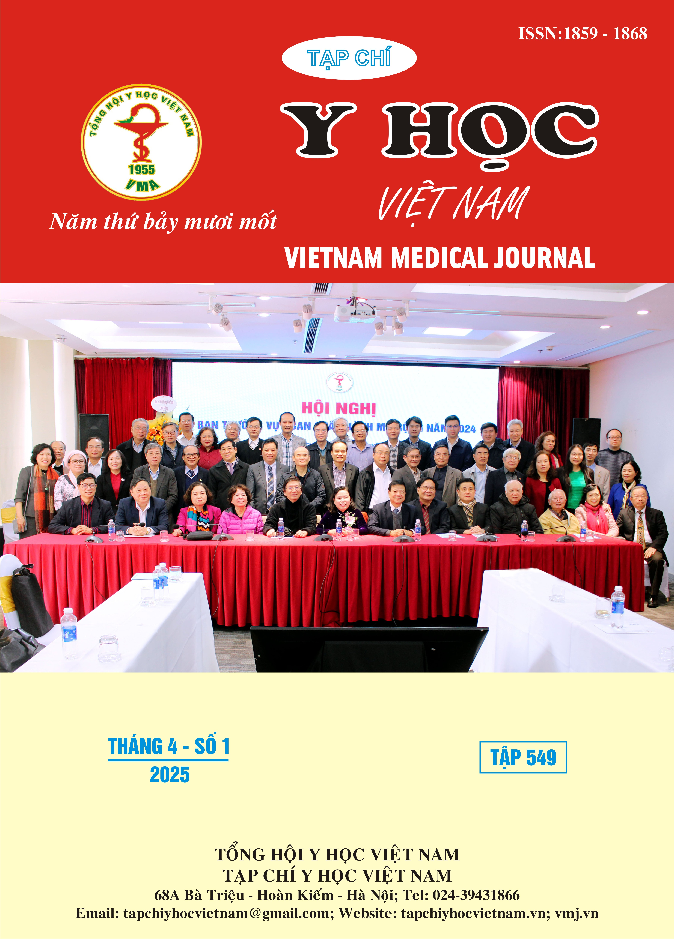CLINICAL AND PARACLINICAL CHARACTERISTICS AND OUTCOMES OF PROPHYLACTIC ANTIBIOTIC ADMINISTRATION IN CESAREAN SECTIONS: A STUDY AT CAN THO CENTRAL GENERAL HOSPITAL (2024–2025)
Main Article Content
Abstract
Objectives: 1. To describe the clinical and paraclinical characteristics of pregnant women receiving prophylactic antibiotic regimens during cesarean section at Can Tho Central General Hospital in 2024–2025. 2. To evaluate the effectiveness of prophylactic antibiotic use in cesarean sections at Can Tho Central General Hospital in 2024–2025. Results: Patient Distribution by Region and Demographic Characteristics. The majority of patients come from Can Tho (39%), followed by Hau Giang (25%) and Vinh Long (21%), while other localities account for 15%. Most patients reside in rural areas (81%), while the remaining 19% live in urban areas. Regarding occupation, the largest group consists of office workers and housewives (49%), followed by workers and farmers (25%), traders (7%), and other occupations (19%). In terms of educational background, most patients have post-secondary education (68%), followed by high school (29%) and secondary school (3%). Age Characteristics and Hospitalization Duration. The majority of patients are aged 18–35, accounting for 80.27%. The group aged 35 and above makes up 18.03%, while the smallest proportion belongs to those under 18 (1.7%). The average age of the prophylactic antibiotic (KSDP) group is 29.3 ± 6 years, while the therapeutic antibiotic (KSDT) group has an average age of 29 ± 6.7 years. The average hospital stay for patients using PAP is 4.02 ± 1.2 days, which is shorter than the TAP group at 4.9 ± 2 days. This indicates that PAP usage helps reduce hospitalization duration. However, there is no statistically significant difference in infection rates between the two groups. Conclusion: There is no significant difference in postoperative infection rates between the two groups. The use of prophylactic antibiotics shortens hospital stays and reduces the number of injections compared to therapeutic antibiotics. This helps reduce the workload for medical staff and is particularly beneficial for patients who fear injections, minimizing the risk of adverse drug reactions.
Article Details
Keywords
prophylactic antibiotics, therapeutic antibiotics
References
2. Bộ Y tế (2012), "Hướng dẫn phòng ngừa nhiễm khuẩn vết mổ", 3671/QĐ-BYT ngày 27 tháng 9 năm 2012 của Bộ Y tế.
3. Võ Văn Chính, Thị Như Quỳnh Trần, và Minh Tâm Lê (2023), “Nghiên cứu hiệu Quả sử dụng kháng Sinh dự phòng Trong mổ lấy Thai tại Bệnh viện Bình An, Quảng Nam”. Tạp Chí Phụ sản 21 (3), 9-14, doi.org/10.46755/vjog.2023.3.1621.
4. Trần Thị Ngọc Hạnh (2019-2020), “Khảo sát kết quả sử dụng kháng sinh dự phòng trong mổ lấy thai tại Bệnh viện Sản nhi Cà Mau”, Tạp chí Y học Cộng đồng 63, 10.52163/yhc.v63i8.528
5. Huỳnh Ngọc Phước và Bùi Chí Thương (2023), "Tỷ lệ nhiễm khuẩn vết mổ ở thai phụ mổ lấy thai chủ động được sử dụng kháng sinh dự phòng cefazolin tại bệnh viện nhân dân Gia Định", Tạp chí Y học Việt Nam. Tập 526, số 1B.
6. Nguyễn Thị Kim Thu và Nguyễn Thị Hương Ly (2021), "Đánh giá tình trạng nhiễm khuẩn vết mổ lấy thai tại Khoa Sản, Bệnh viện Trung ương Quân đội 108", tạp chí y Dược lâm sàng 108. Tập 16 - Số 4/2021.
7. American Society of Health-System Pharmacists (ASHP) (2014), "Clinical Practice Guidelines for Antimicrobial Prophylaxis in Surgery", tr. 734-819
8. World Health Organization (2018), "Global guidelines for the prevention of surgical site infection".


